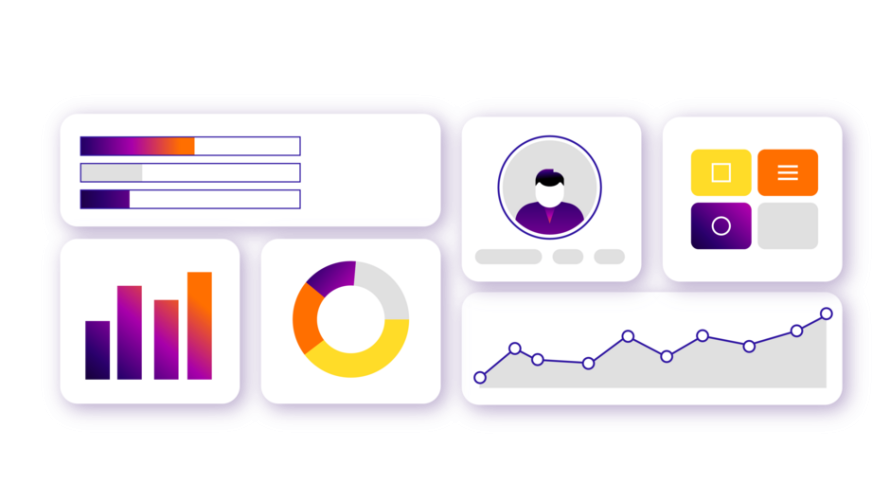Essential B2B Marketing Strategies to Outpace Competitors
In B2B marketing, the target may be a business, but it's important to remember that you are engaging with people.
Unlike B2C marketing, which focuses on winning over individual consumers, B2B marketing typically involves navigating multiple decision-makers within an organization. These decision-makers will evaluate proposals, looking for rational solutions that align with their business objectives.
Josh Koenig, Co-Founder and Chief Strategy Officer at Pantheon, says, “In a risk-averse enterprise landscape where deals often take months or even years to close, a cross-functional understanding of personas and their pain points is paramount.”
While B2B marketing may revolve around businesses, it's about connecting with individuals and addressing their concerns and needs.
Step-by-Step Guide to Creating a Marketing Strategy
Having an effective marketing strategy is essential for B2B success. Here's a guide to help you through the process:
- Create a Brand Positioning Statement: Start by formulating a clear brand positioning statement that encapsulates your business's who, what, when, why and how. Brand positioning is usually the company's public-facing mission statement. For example, Slack defines its mission like this:
“Our mission is to make people's working lives simpler, more pleasant and more productive. Our vision is a world where organizations can achieve agility easily, no matter their size.”
This statement effectively communicates Slack's target audience (people who work), its point of differentiation (a productivity platform for customer companies), and its brand promise (improving performance by making knowledge sharing seamless).
- Understand the Buyer’s Journey: Familiarize yourself with these four stages:
- Awareness: The buyer recognizes a problem or need and begins to look for solutions.
- Consideration: The buyer conducts research and evaluates available options. B2B buyers typically complete around 74% of their research online before completing an offline purchase.
- Decision: Buyers select the product or service that best fits their requirements and budget.
- Retention: It is important to ensure customer satisfaction and loyalty following a purchase. Focus on retaining customers for long-term success after the purchase.
- Identify Target Market and Audience: Understand your target market by considering things like company size, geography, industry, number of employees and revenue. Define the personas within these companies to whom you'll be marketing. Creating buyer personas enables you to tailor your marketing efforts to resonate with your audience effectively.
- The Four Ps of Marketing:
- Product: Clearly outline the features and benefits of your product or service.
- Price: Determine pricing strategies that align with your target market and value proposition.
- Place: Identify the distribution channels through which your product will be available to customers.
- Promotion: Strategize how you'll effectively communicate your offerings to your target audience.
- Marketing Objectives and Budget: Establish clear marketing objectives aligning with your business goals. Allocate a budget that allows you to execute your marketing strategies efficiently.
- Competition Analysis: Conduct thorough research to understand your competitors' strengths and weaknesses and any opportunities or threats. This analysis provides valuable insights that can inform your own marketing approach and help you differentiate your offerings in the market.
- Research the Best Marketing Channels: Explore various marketing channels to determine which are most suitable for reaching your target audience. Consider options such as email marketing, digital marketing, content marketing and social media platforms, among others. For example, the age bracket of most Instagram users is 18-34, so if this is your target audience, then this is a platform to consider.
- Create a Marketing Plan: Develop a detailed marketing plan outlining your specific tactics and activities to achieve your objectives. Ensure your plan is cohesive, well-structured and aligned with your overall strategy.
- Key Performance Indicators (KPIs): Establish measurable KPIs that allow you to track the success of your marketing efforts. These may include metrics like website traffic, lead generation, conversion rates, and customer retention.
B2B Marketing Best Practices
Implementing B2B marketing best practices can significantly enhance your effectiveness in reaching and engaging with your target audience. Here are some strategies to think about:
Content Marketing Strategies
Content marketing is a great way to attract and engage prospective clients. Focus on producing high-quality, informative content that addresses specific industry pain points and provides thought leadership and actionable solutions.
Content marketing is highly effective, but it’s definitely not a new strategy. One of the earliest examples is John Deere, the tractor manufacturer, who created a magazine called “The Furrow" in 1895. "The Furrow" provided valuable agricultural information to farmers, establishing John Deere as a trusted resource and building brand loyalty over time. It still exists today.
By delivering content that adds value to your audience, you can position your brand as a trusted authority in your niche, driving awareness and credibility.
Multi-Channel Marketing Approach
Use a multi-channel marketing approach to maximize your reach and engagement across various touchpoints. Integrate email marketing, social media, SEO, and account-based marketing to connect with buyers at different customer journey stages.
Lead Nurturing and Scoring
Develop lead nurturing programs that deliver relevant content throughout the sales cycle. By providing value at each stage of the buyer's journey, you can guide prospects toward conversion while building trust and credibility.
Implement lead scoring mechanisms to prioritize leads based on their level of engagement and sales readiness. This will enable your sales team to focus their efforts effectively.
Customer Experience and Retention
Prioritize customer experience post-sale to create long-term loyalty and retention. Implement strategies like regular check-ins, ongoing customer education and personalized loyalty programs to enhance the overall experience and encourage repeat business. Investing in your existing customer base increases retention rates and creates opportunities for upselling and cross-selling.
Metrics and Analytics
Track KPIs to measure B2B marketing effectiveness. Use analytics tools to gather data, analyze campaign performance, and gain actionable insights. By continuously monitoring and optimizing your strategies based on data-driven insights, you can demonstrate ROI, refine your approach, and drive sustainable growth.
Alignment with Sales
Ensure alignment between your marketing and sales teams to create an effective buyer journey. Collaborate on setting shared goals, defining messaging, and sharing relevant content to facilitate a cohesive experience for prospects. By fostering a strong relationship between marketing and sales, you can maximize conversion rates and processes and drive mutual success.
Using Account-Based Marketing
Account-based marketing (ABM) marks a shift in B2B marketing, focusing on personalized engagement with high-value accounts rather than broad-reaching campaigns. Here's how ABM differs from traditional approaches and why it's important for B2B success:
- Defining ABM and its Differentiation: ABM targets specific high-value accounts through personalized marketing campaigns. Unlike traditional marketing, ABM tailors messages to individual account needs.
- Benefits of ABM: ABM improves customer experience with personalized experiences. It leads to higher conversion rates and increased ROI.
- Process of Identifying High-Value Accounts: Marketers use CRM and marketing intelligence to analyze factors like revenue potential and the likelihood of conversion to select target accounts.
- Role of CRM and Marketing Intelligence Tools: These tools collect and analyze data for segmentation and tracking, which informs personalized marketing efforts.
B2B Marketing Trends
Staying up to date with marketing trends is essential. Your competition will follow closely, so you must keep ahead of the game to ensure your customers and followers know you’re the best in the business.
Here are some trends currently shaping B2B marketing:
- ABM: As mentioned above, ABM targets specific accounts with personalized content and campaigns. Tailoring marketing efforts enhances engagement and drives higher conversion rates.
Image

- Incorporation of AI and Machine Learning: AI enables predictive analytics, customer segmentation, and personalized customer journeys. AI-powered tools deliver relevant content, driving deeper engagement and loyalty.
- Increased Focus on Customer Experience (CX): Delivering a personalized CX is important in B2B marketing. Optimizing every touchpoint ensures a positive CX, fostering long-term relationships with customers.
- Adoption of Marketing Automation Tools: Automating repetitive tasks frees marketers to focus on strategic initiatives, driving greater efficiency.
- Importance of Video Marketing: Video marketing effectively engages B2B audiences, conveying information concisely and engagingly.
Image

- Advancements in Data Analytics and Measurement: Data analytics measure campaign effectiveness and ROI. Advanced analytics tools provide insights into customer behavior and optimize strategies accordingly.
- Shift Toward Mobile-First Strategies: Mobile-first strategies ensure content accessibility and engagement across all devices.
- Increased Use of Interactive Content: Interactive content like quizzes and calculators engages B2B audiences. Providing interactive experiences captures attention, drives engagement, and gathers valuable data.
- Privacy and Data Protection: This is not such a trend, but GDPR compliance and data protection are crucial. Maintaining transparency and ensuring data security builds trust and credibility with B2B audiences.
Implementing a Strategic B2B Marketing Plan With Pantheon
When it comes to B2B marketing, having a clear and well-defined plan is essential for business success. Remember: behind every B2B transaction are individuals with unique needs and preferences. By focusing on the human element throughout the marketing process, businesses can build genuine connections and form trust with their target audience.
At Pantheon, we understand the importance of having a reliable, stable and secure website as your most valuable brand asset. This is especially true when marketing to large businesses that prioritize these qualities. With Pantheon's world-class WebOps platform, you can ensure superfast hosting for WordPress and Drupal sites and the autonomy for your content team so you can deliver an exceptional online experience to your audience.
Content marketing is arguably the most important tool for B2B marketers, but its effectiveness hinges on accessibility and ease of management. With Pantheon, content management becomes effortless, allowing marketing teams to upload and manage content without relying on developers. This process allows teams to consistently deliver engaging content to their audience, driving engagement and conversion.
Are you ready to elevate your B2B marketing? Watch our Enterprise Marketing Masterclass to explore marketing tactics more deeply and unlock your full potential.